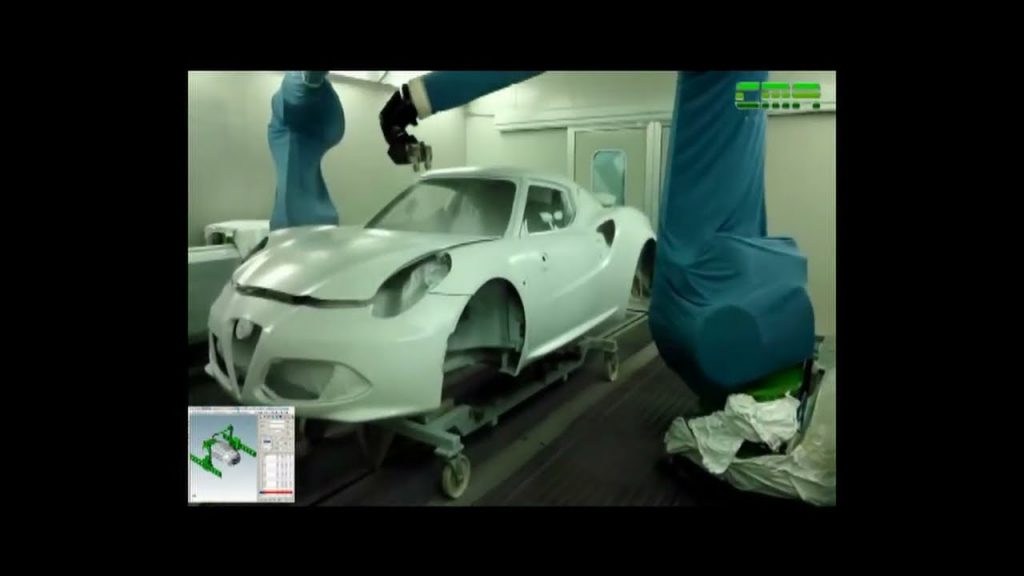Make&Run Industrial Robots "<
Types of Industrial Robots:
Industrial robots come in various forms, each designed to perform specific tasks and functions. Let's take a look at some of the most common types of industrial robots:
1. Cartesian Robots:
Also known as gantry robots, Cartesian robots feature three linear axes that allow them to move in a straight line. They are widely used in pick-and-place operations, assembly lines, and packaging processes.
2. SCARA Robots:
SCARA robots (Selective Compliance Assembly Robot Arm) are known for their fast and precise movements. They are often used in tasks that require high-speed pick-and-place operations, such as electronic assembly, packaging, and material handling.
3. Articulated Robots:
Articulated robots are characterized by their multiple joints, resembling a human arm. These robots are highly flexible and can perform a wide range of movements, making them suitable for various manufacturing applications, including welding, painting, and material handling.
4. Delta Robots:
Delta robots are specifically designed for high-speed and precision tasks. With their unique design featuring three arms connected to a central base, they excel in applications like packaging, sorting, and assembly processes.
5. Collaborative Robots:
Collaborative robots, also known as cobots, are designed to work safely alongside humans. These robots are equipped with advanced sensors and programming that allow them to detect and respond to human presence. They are commonly used in tasks that require human-robot collaboration, such as assembly, inspection, and material handling.
How are Industrial Robots Classified?
Industrial robots are classified based on their application and function. Let's delve into some common classifications:
1. Manipulator Robots:
Manipulator robots are designed to perform repetitive tasks, such as pick-and-place operations, assembly, and material handling. They are widely used in industries like automotive, electronics, and food production.
2. Welding Robots:
Welding robots are specifically designed for automated welding processes. They offer high precision and efficiency, reducing the need for manual labor and ensuring consistent weld quality. These robots are commonly used in the automotive, aerospace, and construction industries.
3. Painting Robots:
Painting robots are equipped with advanced spray guns and precision control systems, allowing them to apply paint evenly and accurately. They are extensively used in the automotive and aerospace industries, where a flawless finish is crucial.
4. Inspection Robots:
Inspection robots are equipped with sensors and cameras to perform quality control checks on products. They can detect defects, measure dimensions, and ensure compliance with industry standards. These robots play a vital role in industries like electronics, pharmaceuticals, and food processing.
5. Packaging Robots:
Packaging robots automate the packaging process, ensuring efficient and consistent packaging of products. They can handle various packaging materials and perform tasks like sorting, labeling, and palletizing. These robots are widely used in industries such as food and beverage, pharmaceuticals, and logistics.
The Future of Industrial Robots:
As technology continues to advance, industrial robots are expected to play an even more significant role in the manufacturing sector. With advancements in artificial intelligence, machine learning, and collaborative capabilities, robots will become more adaptable, intelligent, and capable of working alongside humans.
The integration of robotics with other emerging technologies, such as the Internet of Things (IoT) and big data analytics, will further enhance the efficiency and productivity of industrial robots. This will enable manufacturers to optimize their production processes, reduce costs, and improve overall quality.
In conclusion, industrial robots have revolutionized the manufacturing industry, offering increased productivity, precision, and safety. With various types and classifications, these robots cater to a wide range of applications, from pick-and-place operations to welding, painting, inspection, and packaging.
Check out the coil packing solution with leading manufacturers for a professional solution in the industry. Don't miss the opportunity to boost your manufacturing processes with state-of-the-art technology. Industrial Robot
"Exploring the Efficiency of Industrial Robots: A Comprehensive Classification and Insight into their Types and Applications"






